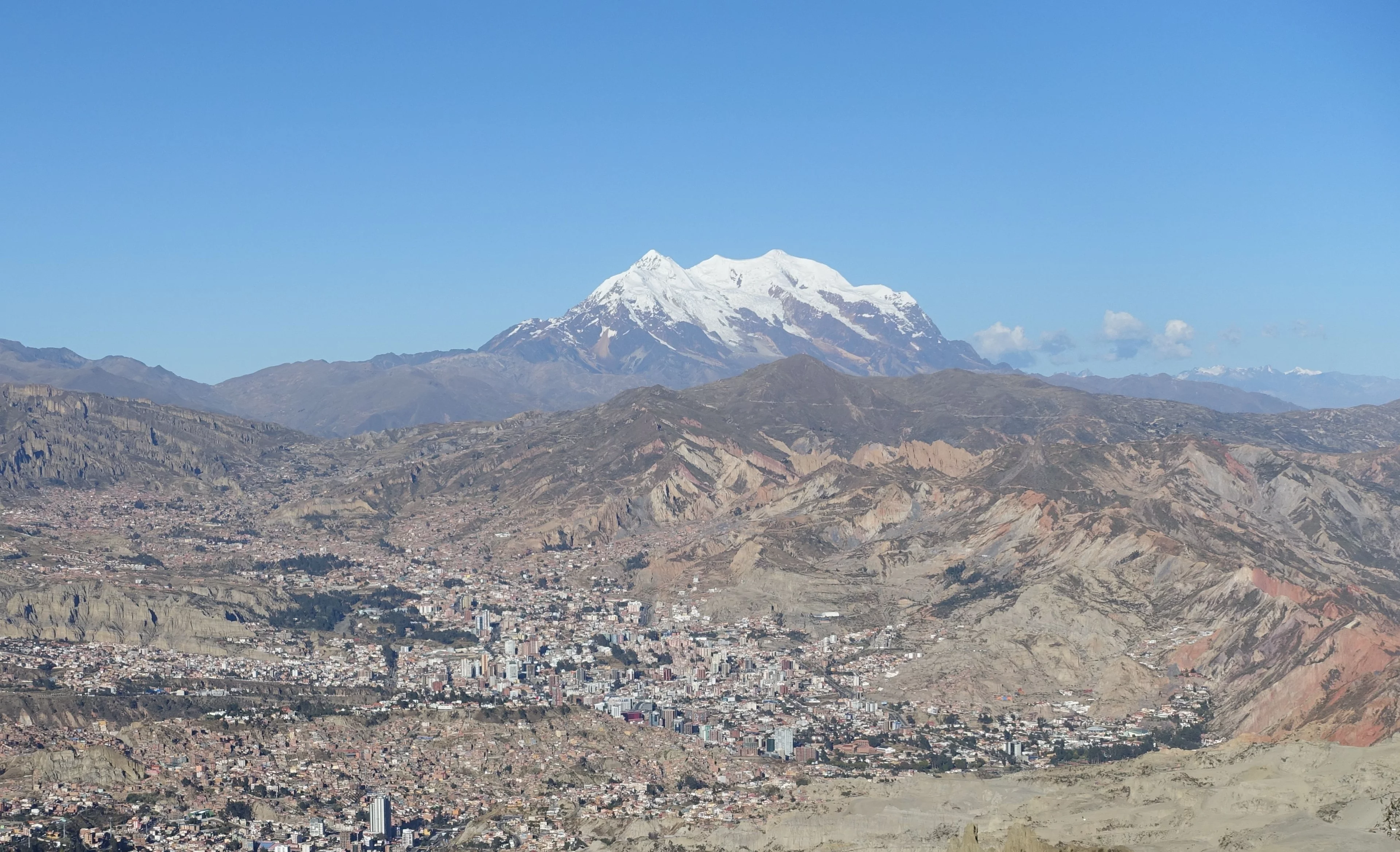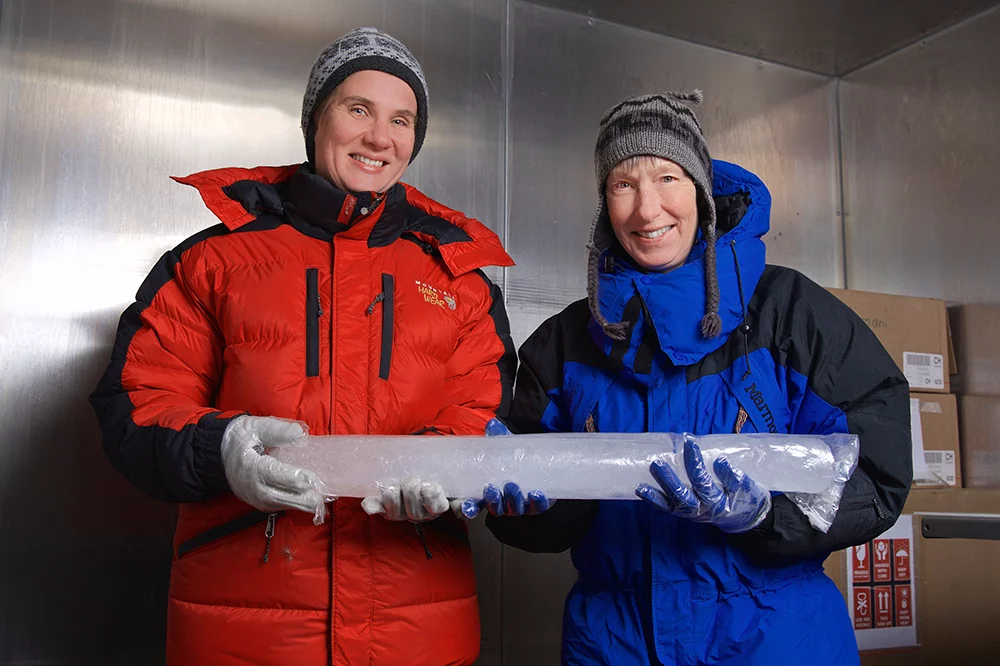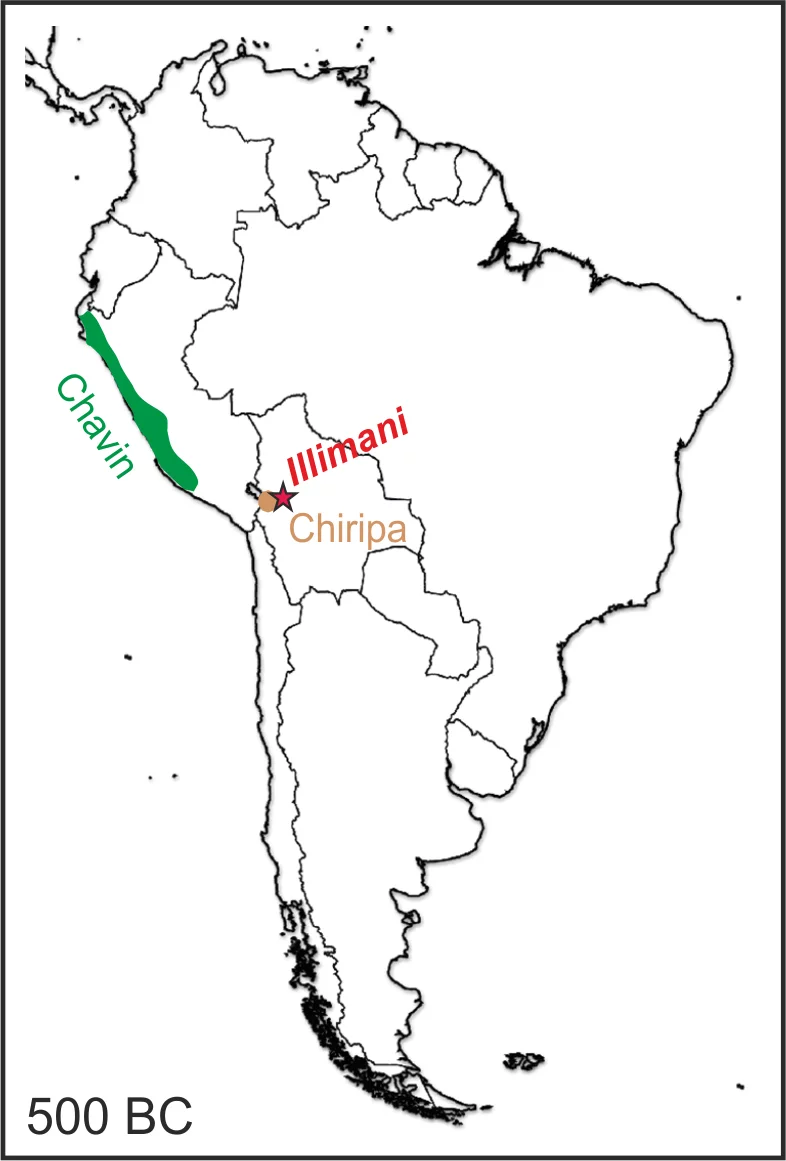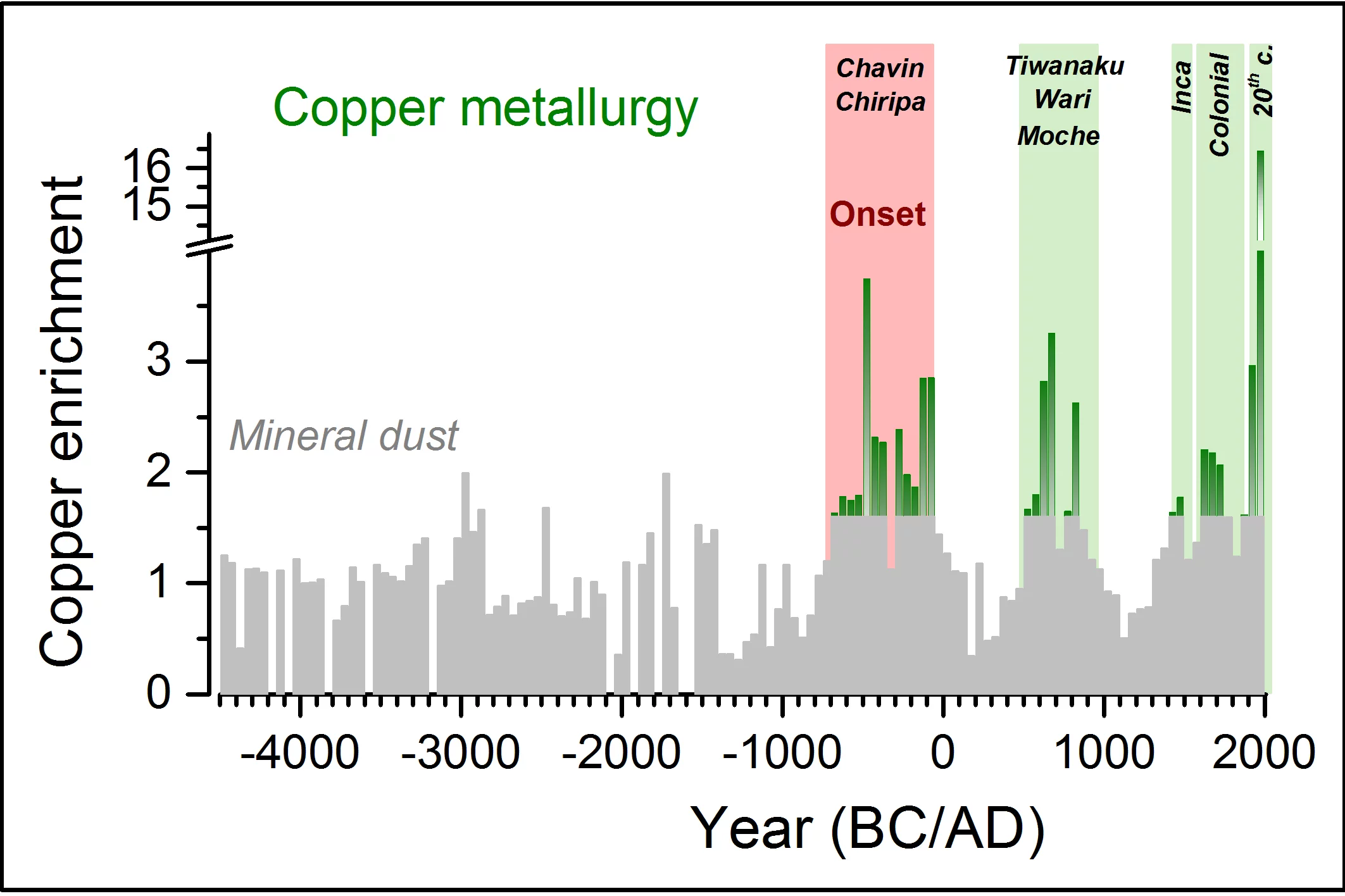South America’s mining industry supplies half the world with copper. The world’s largest mines are located in the Andes. Yet just when copper production began there has remained unclear, until now. Very few artefacts from the early high cultures in Peru, Chile, and Bolivia have been preserved. Now, however, researchers of the Paul Scherrer Institute PSI in Villigen, Switzerland, are on the trail of this mystery. Through analysis of ice from the Illimani glacier in the Bolivian Andes, they found out that by around 700 BC, copper was already being mined and smelted in South America. Their findings are published in Scientific Reports, an online journal of the Nature Publishing Group.
In South America, copper has been mined and smelted for around 2700 years. This has now been determined by researchers of the Laboratory of Environmental Chemistry at the Paul Scherrer Institute PSI in Villigen, Switzerland, through analyses of glacier ice from Bolivia. Copper mining in South America has enormous importance: Chile and Peru are the two largest copper producers in the world; Chile alone accounts for more than 30 percent of global copper production. Yet the beginnings of this essential industrial sector have remained obscure. The only certain evidence came from the time of the Moche culture, which flourished on the northern coast of Peru between 200 and 800 AD. Numerous copper objects from this culture, such as jewelry and ritual tools, have been found. From earlier times, however, there are few finds and no written records.
The ice of a glacier is, in principle, a kind of archive; in its layers, as in the growth rings of a tree, records of the region’s climate development and air quality are stored away. Each year, a new layer of frozen precipitation is deposited on top. And every time, dust particles that were floating in the air at the time are embedded in the new layer. After drilling deep into the glacier and extracting a long column of ice, scientists can bring it — with great care and under refrigeration — into a laboratory for analysis. In just this way the team of Anja Eichler, the study’s first author, and project leader Margit Schwikowski took a 139 m-long ice core that had been drilled during a 1999 expedition, at an altitude of around 6,300 m on the Illimani glacier in Bolivia, and analysed the deposits of metallic dust in particular.
In a cold room of the PSI, the researchers continuously melted the ice core layer by layer, with a device they had developed themselves, and analysed the meltwater with a mass spectrometer. This instrument can separate different chemical elements from each other and determine their respective mass. Thus we worked our way back in time to roughly 4500 BC— the ice corresponding to this time was at a depth of around 134 m,
Anja Eichler reports. And we determined that the first elevated copper concentrations that must trace back to human activity occurred around 700 BC.
Living to the northwest of the glacier at that time were people of the Chavin culture, the first civilisation in the Peruvian Andes, while the Chiripa culture, a relatively simple society, lived in the immediate vicinity of Lake Titicaca. This is known from archaeological excavations. Hence it is possible that both practiced copper metallurgy, smelting copper ore to obtain pure copper for the production of artefacts. Copper particles emitted during this process made their way, on the wind, up to the glacier and were deposited there in the corresponding ice layers
, says Margit Schwikowski. These particles added to the natural copper from mineral dust and thus produced the particularly high copper concentrations.
Following up on this, Anja Eichler looked into the archives of numerous museums and was able to find at least two copper artefacts from that time. One was a bent needle of the Chiripa culture, found in 1934 and kept since then in the American Museum of Natural History in New York. The second was a bracelet, which was found in Bolivia and is on exhibition but cannot be clearly assigned to any culture. In fact there are also copper objects from the time between 1400 and 1100 BC — much earlier. There, though, what you’re dealing with is hammered metal made from native copper
, Margit Schwikowski explains. That is elementary copper, which also occurs naturally in this form. It is quite rare, though. For copper in larger quantities, ore must be mined and the pure copper must be extracted through smelting.
The earliest evidence of smelting furnaces comes from the later Moche culture for which, likewise, elevated copper concentrations can be detected in glacier ice. Moche people evidently used a type of ceramic oven
, Anja Eichler says. This had several holes where air could be injected through blow-tubes to heat the fire to well over 1,000 degrees C. When exactly such ovens were used for the first time, however, is not known
, adds archaeometallurgist Thilo Rehren of University College London (UCL), who took part in the study. But it is also possible that the smiths of the earlier cultures threw copper ore into simple pit furnaces dug into the ground. In these fires small cakes of metal were formed, which could be processed further in crucibles.
With their study, the researchers are correcting a picture that stems from another, earlier study. In this, a different research group postulated that copper metallurgy in South America might have begun still earlier, by around 2000 BC. That group had done a similar analysis on a peat bog drilled at Tierra del Fuego and detected a strong increase, already for this early period, in copper concentrations. Like ice, peat forms layers over the years and centuries, which preserve records of environmental pollution in past times. Tierra del Fuego lies around 3,000 km south of the centres of metallurgy in the Andes
, says Anja Eichler. Besides that, the peat bog record only reaches a little farther back than 2000 BC — our ice core, in contrast, goes back beyond 4500 BC. That puts us in the position to quantify the natural fluctuations in the deposition of copper dust before the onset of metallurgy. And our results indicate that the increase at Tierra del Fuego at that time was a natural regional fluctuation.
Text: Jan Berndorff
Background
Copper particles in the layers of a glacier originate from two different sources. One is natural mineral dust, which is carried by the wind from the rock surfaces of the mountains and contains copper along with other metals. The second source is copper particles emitted into the air in the process of copper smelting. Thus to find out when smelting started, the PSI researchers had to correct for the natural share of copper. They were able to do this by observing one of the other metals contained in the natural dust:We basically divided the copper concentration by the concentration of the metal cerium, which always accompanies the copper in natural dust, explains Anja Eichler. And they did that over a span of millennia. Copper enrichment factors above the natural amount can be clearly identified in this manner.
In fact, the natural input fluctuates over time. The copper concentration between 4500 and 2500 BC was even higher than in the times of the later high cultures. A comparison with the trend in the water level of Lake Titicaca revealed, however, that this was due to a long period of pronounced drought and correspondingly larger quantities of dust in the air. Therefore, in parallel, the cerium content in the ice was also correspondingly higher. In contrast, however, with the later onset of metallurgy only the concentration of copper increased, not that of cerium. This was observed, similarly, in the times of later South American high cultures such as the Moche, Tiwanaku, Wari, and Inca, as well as during the colonial period and in the 20th century.
About PSI
The Paul Scherrer Institute PSI develops, builds and operates large, complex research facilities and makes them available to the national and international research community. The institute's own key research priorities are in the fields of matter and materials, energy and environment and human health. PSI is committed to the training of future generations. Therefore about one quarter of our staff are post-docs, post-graduates or apprentices. Altogether PSI employs 2000 people, thus being the largest research institute in Switzerland. The annual budget amounts to approximately CHF 370 million. PSI is part of the ETH Domain, with the other members being the two Swiss Federal Institutes of Technology, ETH Zurich and EPFL Lausanne, as well as Eawag (Swiss Federal Institute of Aquatic Science and Technology), Empa (Swiss Federal Laboratories for Materials Science and Technology) and WSL (Swiss Federal Institute for Forest, Snow and Landscape Research).
(Last updated in May 2016)
Contact
Prof. Dr. Margit Schwikowski, Head of the Analytical Chemistry Research Group, Laboratory of Environmental Chemistry, Paul Scherrer Institute, 5232 Villigen PSI, SwitzerlandTelephone: +41 56 310 41 10, e-mail: margit.schwikowski@psi.ch
Dr. Anja Eichler, Analytical Chemistry Research Group, Laboratory of Environmental Chemistry Paul Scherrer Institute, 5232 Villigen PSI, Switzerland
Telephone: +41 56 310 20 77, e-mail: anja.eichler@psi.ch
Original Publication
Ice-core evidence of earliest extensive copper metallurgy in the Andes 2700 years agoA. Eichler, G. Gramlich, T. Kellerhals, L. Tobler , Th. Rehren & M. Schwikowski
Scientific Reports 7 , Article number: 41855 (2017); Published online 31 January 2017;
DOI: 10.1038/srep41855




